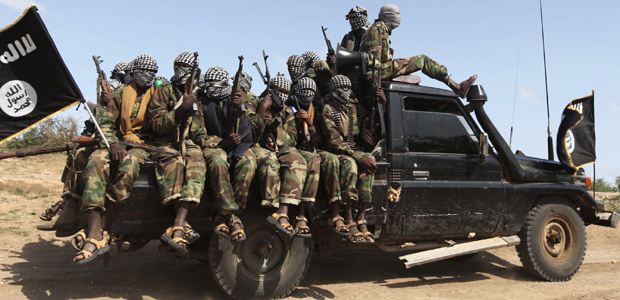Kenya goes to war on al-Shabaab
As Kenya goes to war on al-Shabaab, defence analyst Anthony Tucker-Jones writes for Channel 4 News on Nairobi’s desperate efforts to contain Somalia’s troublesome militants.

On Sunday Kenyan tanks and other armoured vehicles rolled through the Somali border town of Dhobley backed by planes and helicopters. Local witnesses reported a column of 40 vehicles that included towed artillery.
The Kenyan authorities justified this unprecedented incursion as a hot pursuit mission chasing Somalia’s al-Shabaab Islamist militants across the border. This terror group has long established links with al-Qaeda.
Kenya claims the intervention was at the behest of Somalia’s transitional government, which although it controls little, is backed by the international community.
Previously Nairobi sought to keep al-Shabaab at arms length by fighting a proxy war through several southern Somali militias. Clearly this policy has not produced the desired results.
The Kenyan operation did not start off well with the loss of five soldiers after a helicopter malfunctioned over Liboi some 20kms south of the Kenyan border on Sunday evening.
Nonetheless Kenya has vowed to set up a buffer zone in southern Somalia and al-Shabaab has threatened immediate retribution.
At a news conference in Mogadishu on Monday Ali Mohamud Rage, a spokesman for the movement warned Kenya must pull its troops out of Somalia “otherwise remember what happened in Uganda’s Capital.”
Read more: Militants deny kidnapping British woman in Kenya
This was a clear reference to the suicide bombings in Kampala in July 2010 that left 76 dead.
Not surprisingly the Kenyan Government has declined to comment on Kenyan troop numbers inside Somalia. Nonetheless the deployment of armour signals Nairobi means business and that the incursion may not be short lived.
The Kenyan Army is relatively small with only around 20,000 men under arms so Nairobi’s long-term options are fairly limited.
Its trump card is its armoured forces – while the British supplied Vickers Mk3 tanks and French supplied Panhard AML-90 armoured cars are fairly elderly they are more than capable of dealing with lightly armed militants. The army can also call on fire support from 105mm artillery and 81mm mortars.
The Kenyan air force can probably put a handful of its T-5 Tiger jets and Hughes 500 helicopters into the air for supporting ground attack operations.
Kidnap ‘final straw’
In recent months Somali militants have been accused of a spate of abductions from Kenya as well as the death of an Englishman David Tebutt. The seizure of two Spanish aid workers last week was the final straw.
Al-Shabaab denies complicity but its presence is a menace as it controls much of southern and central Somalia as well as the port of Kismayo. It consolidated its hold on the region after government and African Union forces forced a tactical withdrawal from the Somali capital Mogadishu in August.
Some 9,000 Ugandan and Burundian troops are currently trying to safeguard the beleaguered government in Mogadishu. The Kenyan incursion puts yet more foreign troops on Somali soil.
To compound matters both sides of the Kenyan-Somali border are facing a famine crisis that in total threatens around 7.5 million people. Cynics might argue that Kenya has now been given the justification to close its border to further Somali refugees.
Anthony Tucker-Jones is the author of The Rise of Militant Islam and the terrorism and security correspondent for intersec – The Journal of International Security. He also regularly writes for defencemanagement.com.
-
Latest news
-
‘Authentic Stupidity’: Ben Elton’s new show explores how idiotic human beings can be5m

-
Is Israel’s evacuation of Rafah the precursor to full scale invasion?3m

-
Eurovision: Non-binary artist wins for first time2m

-
Tens of thousands march in Georgian capital against ‘foreign agents’ bill2m

-
‘Russia’s number one goal is to get troops closer to Kharkiv,’ says Ukrainian security analyst4m

-




